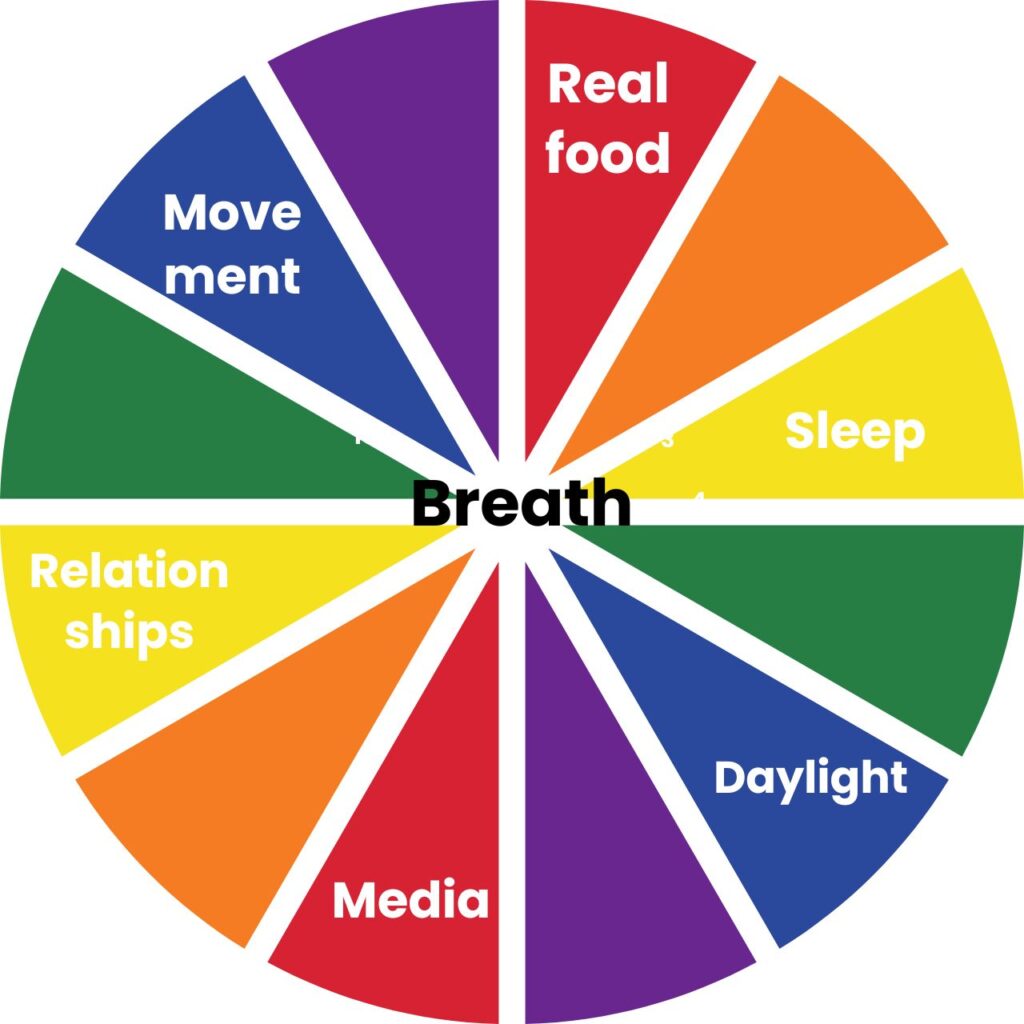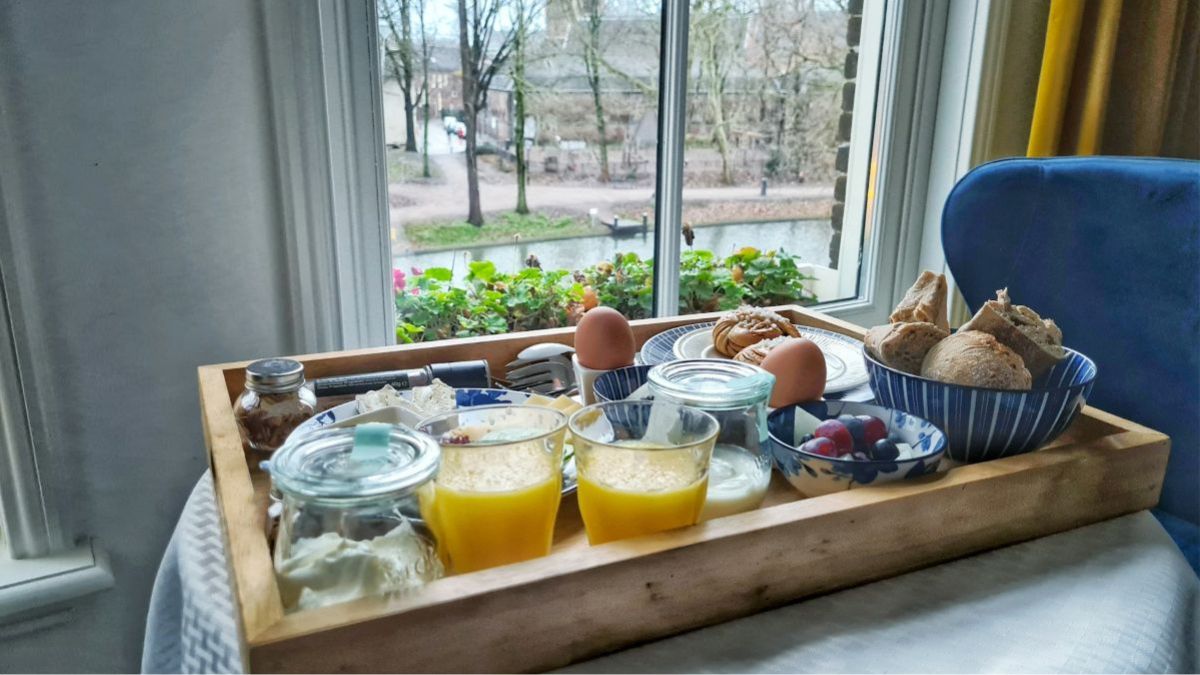What do you consume—and how does it shape your day?
Quick Answer
“Consumption” isn’t just food. It’s everything you take in, be it food and drink, light and sound, media and relationships, sleep and breath. Tiny, repeated choices here may support steadier energy and calmer nervous-system tone. Start with one swap per day: more real food, enough sleep, a little morning light, kinder media, and simple movement.

What “consumption” includes (beyond food)
Food & drink · Light (sun/daylight vs artificial only) · Sound & media · Relationships · Sleep · Breath & movement.
Think of these as inputs. They influence your pace, mood, and recovery.
Gentle swaps (pick one per area)
1) Real food ↔︎ Ultra-processed “nonfoods”
Choose more often: single-ingredient foods, simple proteins, eggs, fish/meat, vegetables, fruit, broth, fermented foods, good fats.
Try less often: ultra-processed snacks, sugar-sweetened drinks, “energy” foods that make you crash.
Tiny step: one real food at the first meal; chew slowly; pause between bites.
2) Quality sleep ↔︎ Chronic short sleep
A common myth: “Sleep is a waste of time.” (You may even see it championed with eye bags to match.)
Choose more often: a wind-down, darker room, cooler temp, consistent window.
Try less often: late caffeine, doomscrolling in bed, “revenge bedtime procrastination.”
Tiny step: a 30-minute wind-down and lights dimmed before bed. Protect sleep like a meeting with your future self.
3) Sun/daylight ↔︎ Sun-deprived indoor only
Choose more often: morning light on your eyes (outdoors if you can), brief daylight breaks, evening sunsets.
Try less often: fluorescent-only days.
Tiny step: 5–10 minutes outside light before 10 a.m. (shade is fine; no need to stare at the sun).
4) Peaceful/energizing media & relationships ↔︎ Negative loops
Choose more often: music/nature sounds, long-form reading, people who leave you clearer and steadier.
Try less often: outrage feeds, comment wars, relationships that drain or confuse.
Tiny step: a 24-hour media fast from one account that spikes your nervous system.
5) Movement nourishment ↔︎ All-day sitting
Choose more often: short movement snacks such as hinge, squat to chair, wall push-ups, carries, easy walks.
Tiny step: 10–15 minutes of functional patterns three times this week.
6) Mineral-rich water ↔︎ Sugary drinks only
Choose more often: water + pinch-of-mineral salt (if it suits you), broth, unsweet tea.
Tiny step: set 2–3 water moments in your day.
7) Nasal, longer exhale ↔︎ Shallow, rushed mouth-breathing
Choose more often: inhale 4 / exhale 6 for a few cycles; soften jaw/shoulders.
Tiny step: one minute of exhale-focused breaths before meals.
2-minute practice: The Inputs Audit
- Unclench jaw/shoulders; breathe 4/2/6 for 3 cycles.
- List today’s inputs: food, light, media, people, sleep, movement, breath.
- Circle one swap you’ll try for the next 24 hours.
- Do it now (set a 2-minute timer to set up the change: fill a water bottle, step outside for light, mute one account).
1-minute reflections (journal-only)
- Which input felt most calming today?
- What did I remove that gave me energy back?
- What’s one tiny swap I can repeat tomorrow?
Research Corner
- Negative news/doomscrolling: Studies during/after COVID show heavier exposure to negative, crisis-related feeds is associated with higher depressive/PTSD symptoms. (Curate inputs.)
- Ultra-processed foods (UPFs): An umbrella review in BMJ found that higher UPF exposure was associated with more adverse outcomes—especially cardiometabolic disease and common mental disorders. (Association ≠ causation; still a useful signal.)
- Daylight & circadian rhythm: Experimental and interventional studies show light exposure helps set sleep timing and alertness by shifting circadian phase; morning light tends to advance rhythms.
- Short sleep & mood: Population data link short sleep duration with higher odds of depression. (Good reason to protect a consistent sleep window.)
FAQ
Do I have to be perfect?
No. This is about direction, not perfection. Repeat small wins.
How much sleep is “enough”?
Aim for a consistent window that leaves you clear during the day. Many adults feel best with roughly 7–9 hours; your needs may vary.
How much sun is safe?
Short, regular daylight exposure (especially morning/evening) supports rhythm. Protect your skin as needed; shade and clouds still count.
What if real food is hard to access right now?
Start with one upgrade you can manage, for example, like eggs, canned fish, or broth… then build from there.
What about night shift?
Prioritize a stable sleep block, light-blocking when you sleep, and a short pre-shift light routine; keep caffeine earlier in the shift.
Related reading
Get updates (quiet practices & new guides):
Clinical services are provided within my scope as a licensed clinical psychologist (CA, RI). My Doctor of Integrative Medicine credential is a doctoral degree with board certification by the Board of Integrative Medicine (BOIM) and does not represent a medical/physician license. All educational content is for learning only and is not a substitute for professional medical or psychological care.
About Dr. Nnenna Ndika
Dr. Nnenna Ndika is an integrative, trauma-informed clinical psychologist (CA/RI) and Doctor of Integrative Medicine (BOIM). Her work bridges neuroscience, somatic regulation, and environmental rhythms—simple, minimalist practices that help the body remember safety and the mind regain quiet strength. Silent Medicine is educational only; it does not replace medical or psychological care. Begin with Start Here or explore Mind-Body Healing.






